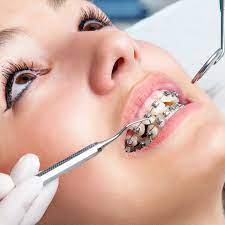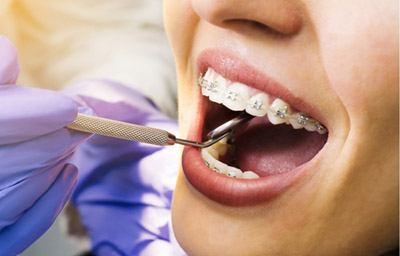More About Causey Orthodontics
Wiki Article
The Causey Orthodontics Ideas
Table of ContentsUnknown Facts About Causey OrthodonticsEverything about Causey OrthodonticsThe Facts About Causey Orthodontics UncoveredCausey Orthodontics for DummiesSome Known Facts About Causey Orthodontics.
Disregarding occlusal relationships, it was regular to eliminate teeth for a variety of oral problems, such as malalignment or overcrowding. The concept of an undamaged teeth was not extensively valued in those days, making bite connections appear pointless. In the late 1800s, the concept of occlusion was essential for developing trustworthy prosthetic replacement teeth.As these principles of prosthetic occlusion advanced, it became an important device for dentistry. It remained in 1890 that the work and influence of Dr. Edwards H. Angle began to be really felt, with his payment to modern-day orthodontics particularly notable. Concentrated on prosthodontics, he showed in Pennsylvania and Minnesota prior to directing his interest in the direction of oral occlusion and the treatments required to keep it as a normal condition, thus coming to be recognized as the "father of contemporary orthodontics".

The idea of perfect occlusion, as proposed by Angle and integrated into a classification system, enabled a change towards dealing with malocclusion, which is any type of discrepancy from normal occlusion. Having a complete set of teeth on both arches was highly looked for after in orthodontic treatment as a result of the demand for specific connections between them.
Causey Orthodontics Fundamentals Explained
As occlusion became the vital concern, facial proportions and aesthetics were overlooked - emergency orthodontist near me. To achieve ideal occlusals without utilizing outside pressures, Angle proposed that having perfect occlusion was the very best means to gain optimal facial aesthetics. With the death of time, it ended up being fairly evident that even an outstanding occlusion was not appropriate when taken into consideration from an aesthetic perspectiveCharles Tweed in America and Raymond Begg in Australia (that both researched under Angle) re-introduced dental care removal right into orthodontics throughout the 1940s and 1950s so they can boost facial esthetics while additionally ensuring better stability worrying occlusal relationships. In the postwar duration, cephalometric radiography begun to be made use of by orthodontists for determining modifications in tooth and jaw setting triggered by growth and treatment. It became obvious that orthodontic treatment might adjust mandibular development, leading to the formation of useful jaw orthopedics in Europe and extraoral pressure procedures in the US. These days, both functional devices and extraoral tools are used around the globe with the objective of modifying growth patterns and types. Consequently, pursuing real, or a minimum of improved, jaw partnerships had actually ended up being the main purpose of therapy by the mid-20th century.
Causey Orthodontics for Dummies
 Up until the mid-1970s, braces were made by wrapping steel around each tooth. http://mayfever.crowdfundhq.com/users/causey-orthodontics., it ended up being feasible to rather bond steel brackets to the teeth.
Up until the mid-1970s, braces were made by wrapping steel around each tooth. http://mayfever.crowdfundhq.com/users/causey-orthodontics., it ended up being feasible to rather bond steel brackets to the teeth.Andrews provided an informative interpretation of the excellent occlusion in permanent teeth. This has had meaningful impacts on orthodontic therapies that are carried out routinely, and these are: 1. Appropriate interarchal partnerships 2. Proper crown angulation (pointer) 3. Proper crown disposition (torque) 4. No rotations 5. Tight get in touch with points 6. Flat Contour of Spee (0.02.5 mm), and based upon these concepts, he found a therapy system called the straight-wire device system, or the pre-adjusted edgewise system.
The benefit of the style hinges on its bracket and archwire mix, which needs just very little cable bending from the orthodontist or medical professional (emergency orthodontist near me). It's aptly called after this feature: the angle of the port and density of the bracket base ultimately figure out where each tooth is located with little need for added adjustment
The Facts About Causey Orthodontics Revealed
Both of these systems employed identical braces for each tooth and demanded the bending of an archwire in 3 planes for locating teeth in their wanted positions, with these bends determining ultimate positionings. When it concerns orthodontic appliances, they are separated into 2 kinds: removable and dealt with. Removable devices can be taken on and off by the individual as required.
Thus, nearly all contemporary fixed devices can be thought about variations on this edgewise device system. Early 20th-century orthodontist Edward Angle made a significant contribution to the globe of dentistry. He developed four distinct home appliance systems that have been made use of as the basis for numerous orthodontic treatments today, preventing a few exemptions.
The Single Strategy To Use For Causey Orthodontics

The cable ended in a string, and to relocate it forward, a flexible nut was utilized, which enabled a boost in area. By ligation, each private tooth was affixed to this large archwire (orthodontist near me). Because of its minimal variety of motion, Angle was incapable to achieve specific tooth positioning with an E-arch
These tubes held a firm pin, which might be rearranged at each visit in order to move them in area. Called the "bone-growing device", this device was supposed to encourage much healthier bone growth because of its capacity for moving force straight to the origins. Implementing it verified troublesome in truth.
Report this wiki page